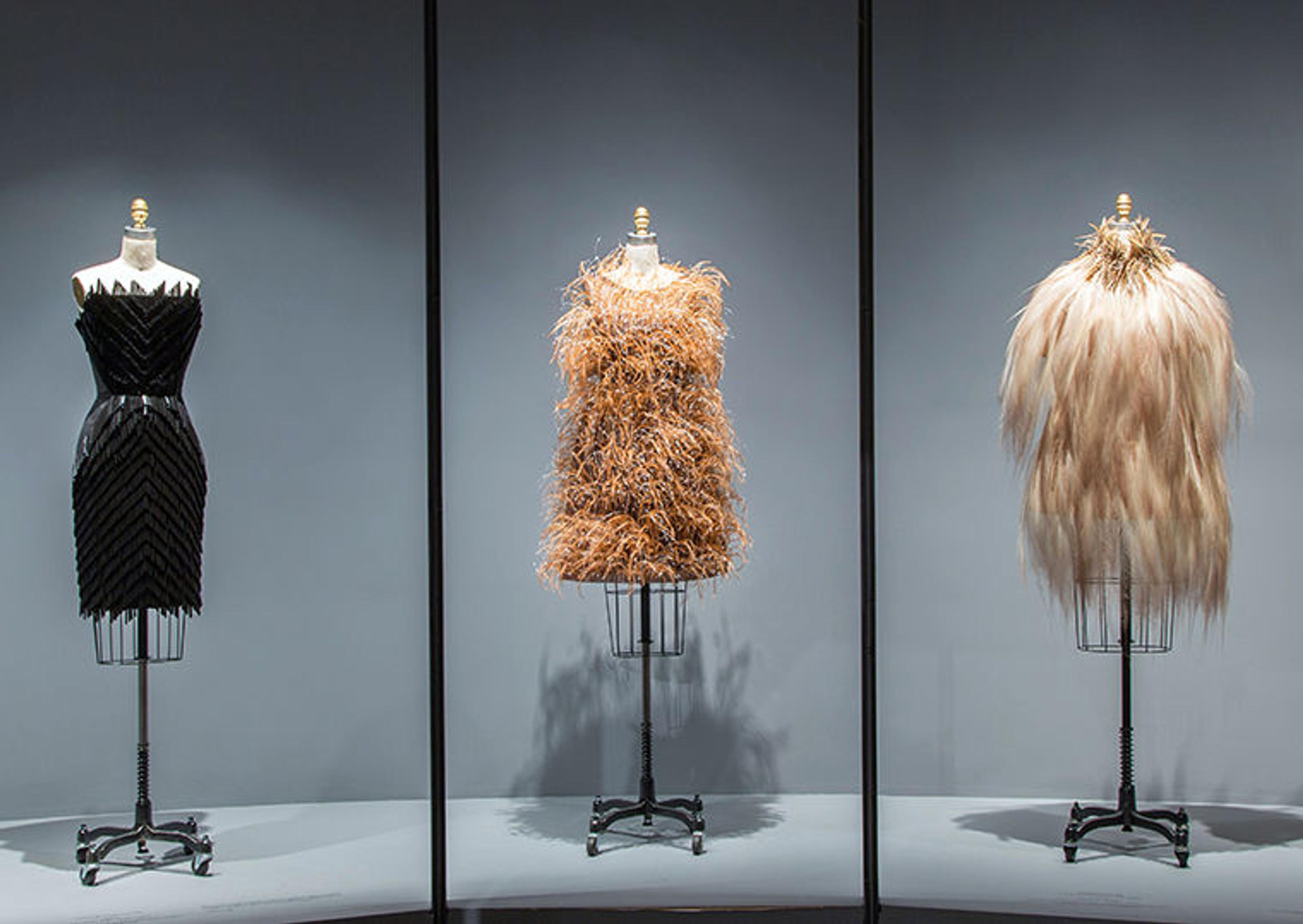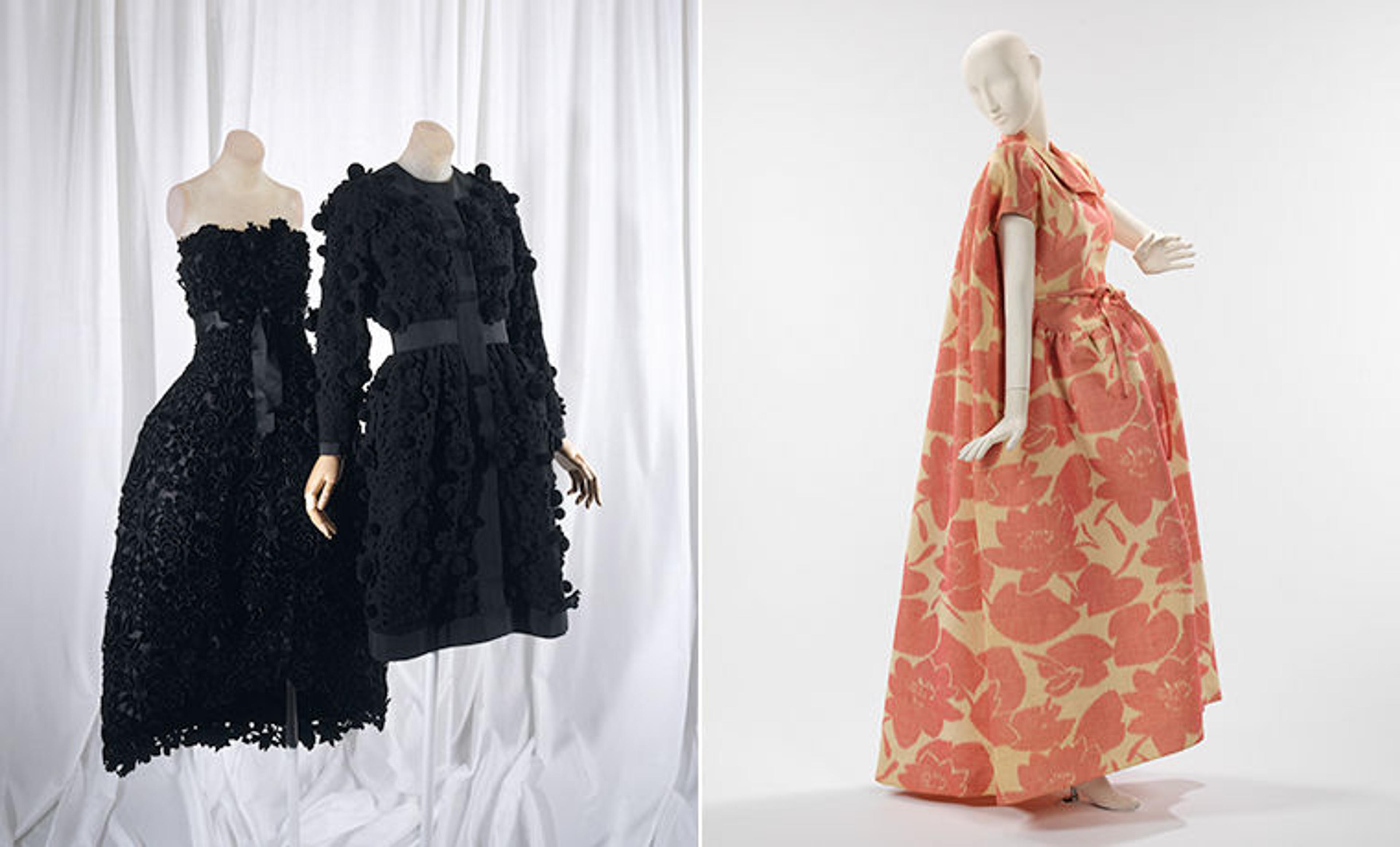
Hubert de Givenchy's silk and ostrich feather evening dress from 1966–67 (center) featured prominently in the in the "plumasserie" section of The Costume Institute's spring 2016 exhibition Manus x Machina: Fashion in an Age of Technology
«Dresses, coats, hats, and full ensembles by Hubert de Givenchy, who died on Saturday outside Paris at the age of ninety-one, are well represented in The Costume Institute collection at The Met, and have been since the 1960s.» That decade, at least twenty-eight examples—including a black silk dress made around 1956, just four years after he founded House of Givenchy—became part of The Met collection. Through the years, the Museum kept collecting his work, which was included in exhibitions such as Haute Couture in 1995 and Manus x Machina: Fashion in an Age of Technology, which opened in May 2016 and prominently featured a Givenchy evening dress made in part of dyed ostrich plumes.
In honor of his life, enjoy a selection of Givenchy's work in The Met collection.

Left: House of Givenchy (French, founded 1952). Evening dress, ca 1956 (left). Velvet cutwork over silk foundation. The Metropolitan Museum of Art, New York, Gift of Rodman A. Heeren, 1961 (C.I.61.54.2). Right: House of Givenchy (French, founded 1952). Evening dress, ca. 1963. Silk. The Metropolitan Museum of Art, New York, Brooklyn Museum Costume Collection at The Metropolitan Museum of Art, Gift of the Brooklyn Museum, 2009; Gift of Mrs. Benjamin R. Kittredge, 1971 (2009.300.492a, b)